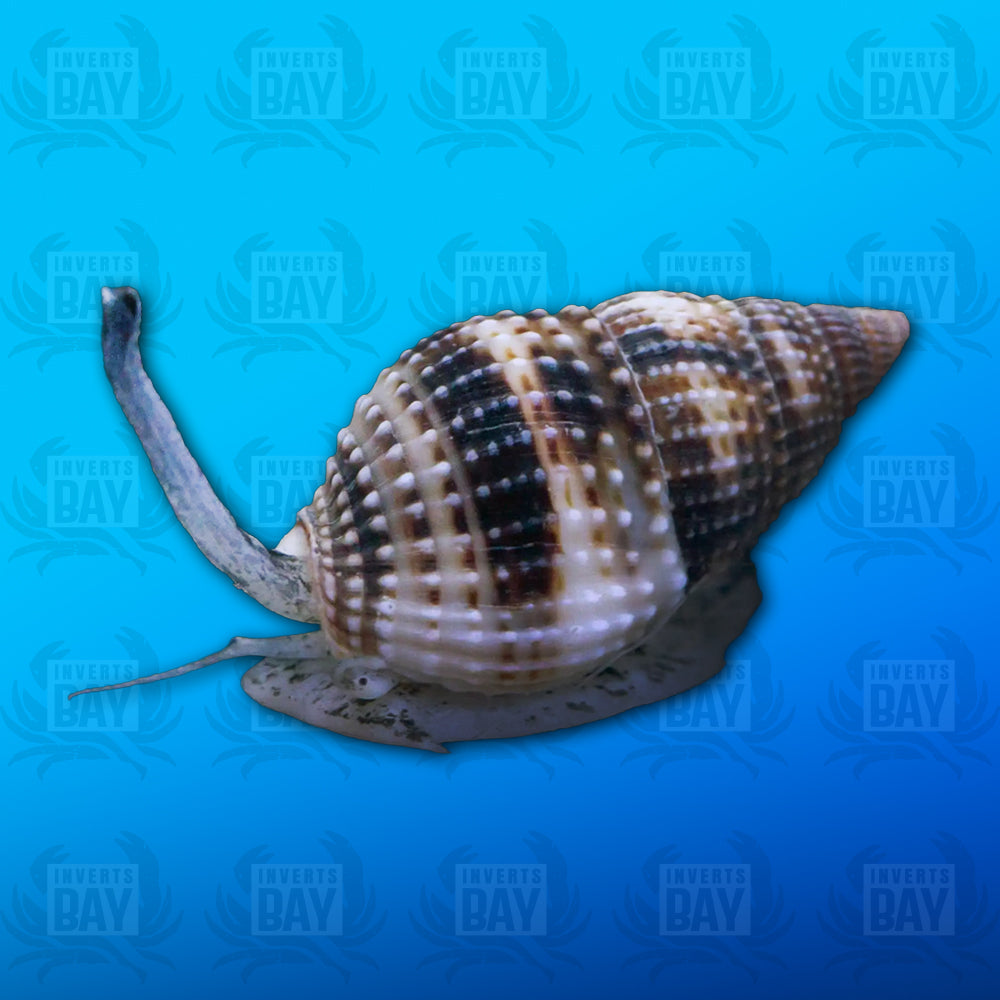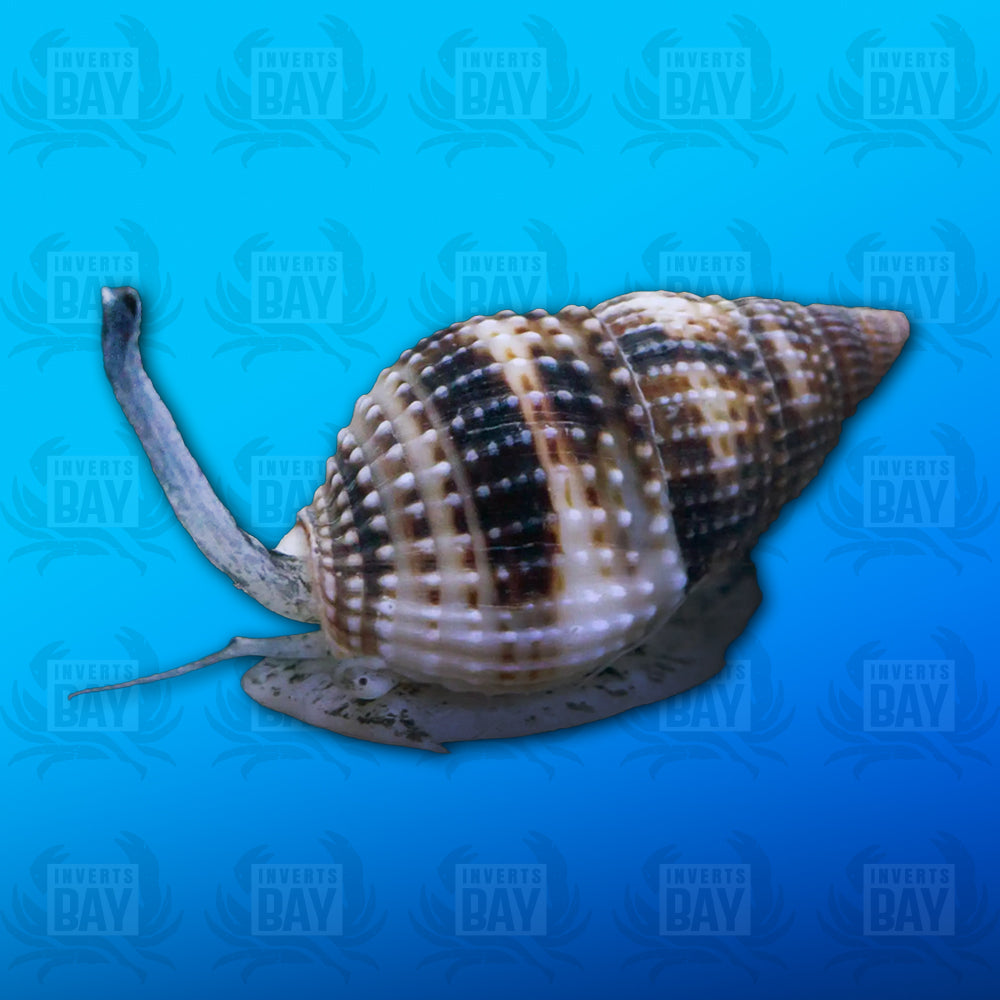(!) Online orders may be adjusted or canceled in the event of pricing errors or unavailable items.
1
/
de
1
Inverts Bay
Escargot de Nassarius
Escargot de Nassarius
Prix habituel
$5.00 CAD
Prix habituel
$5.00 CAD
Prix promotionnel
$5.00 CAD
Prix unitaire
/
par
Frais d'expédition calculés à l'étape de paiement.
Impossible de charger la disponibilité du service de retrait
The Nassarius Snail (Nassarius sp.) is a beneficial marine invertebrate renowned for its scavenging abilities and distinctive burrowing behavior. Its active role in substrate aeration and detritus consumption makes it a valuable addition to saltwater aquariums.
Essential Information:
- Common Names: Nassarius Snail, Nassa Mud Snail, Sand Snail
- Scientific Name: Nassarius sp.
- Family: Nassariidae
- Origin/Habitat: Found in sandy or muddy substrates in littoral zones worldwide.
- Maximum Size: Up to 0.75 inches (2 cm)
- Lifespan: Approximately 2 years
- Level of Difficulty: Easy; suitable for aquarists of all experience levels
- Reef Safe: Yes; they are considered reef-safe and beneficial for substrate health
Appearance & Physical Traits:
- Coloration & Pattern: Typically gray to brown shells with subtle patterns, aiding camouflage in sandy environments.
- Body Shape & Structure: Conical shells with a sharp point and flat base; elongated siphon used for breathing and feeding.
Habitat & Environmental Needs:
- Minimum Tank Size: Suitable for tanks with a deep sand bed and established live rock
- Water Temperature: 72°F - 80°F (22°C - 27°C)
- pH Level: 8.3 - 8.4
- Specific Gravity: 1.023 - 1.025
- Aquascape: Requires a deep sand bed and live rock for optimal substrate health and food availability
Diet & Feeding:
- Diet Type: Scavenger
- Preferred Foods: Detritus, uneaten food, and organic debris
- Feeding Frequency: Generally self-sufficient in established tanks; monitor their condition and supplement as needed.
Behavior & Compatibility:
- Temperament: Peaceful and non-aggressive
- Social Behavior: Solitary; does not require companions but can coexist with other peaceful tank inhabitants.
- Tank Mate Compatibility: Compatible with most reef-safe fish and invertebrates; avoid housing with predatory species that may harm them.
- Activity Level: Primarily nocturnal but may also be active during daylight hours.
Care Considerations & Additional Notes:
- Ease of Care: Hardy and adaptable, making them suitable for beginners; can tolerate a wide range of water parameters.
- Special Requirements: Ensure stable water parameters and avoid sudden changes in salinity or temperature; acclimate slowly when introducing to a new tank to prevent shock.
- Breeding Info: Breeding in captivity is uncommon; they are broadcast spawners, releasing eggs and sperm into the water column; successful breeding may require specific conditions, such as water quality and the presence of both sexes.
- Additional Notes: Regular monitoring of water quality is essential; ensure there is sufficient detritus and organic matter in the substrate to support their dietary needs, or be prepared to provide supplemental feeding.
Share

